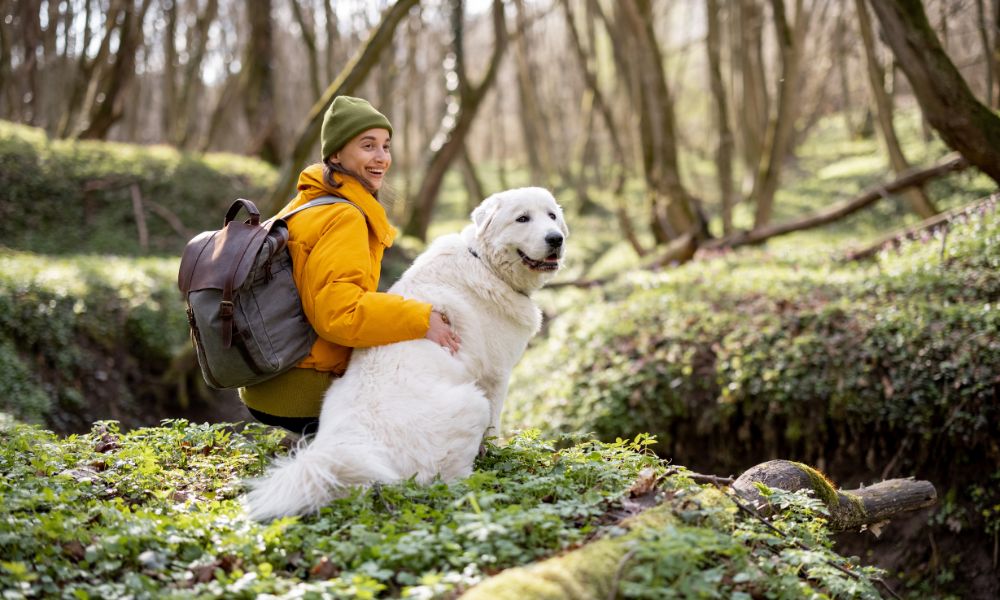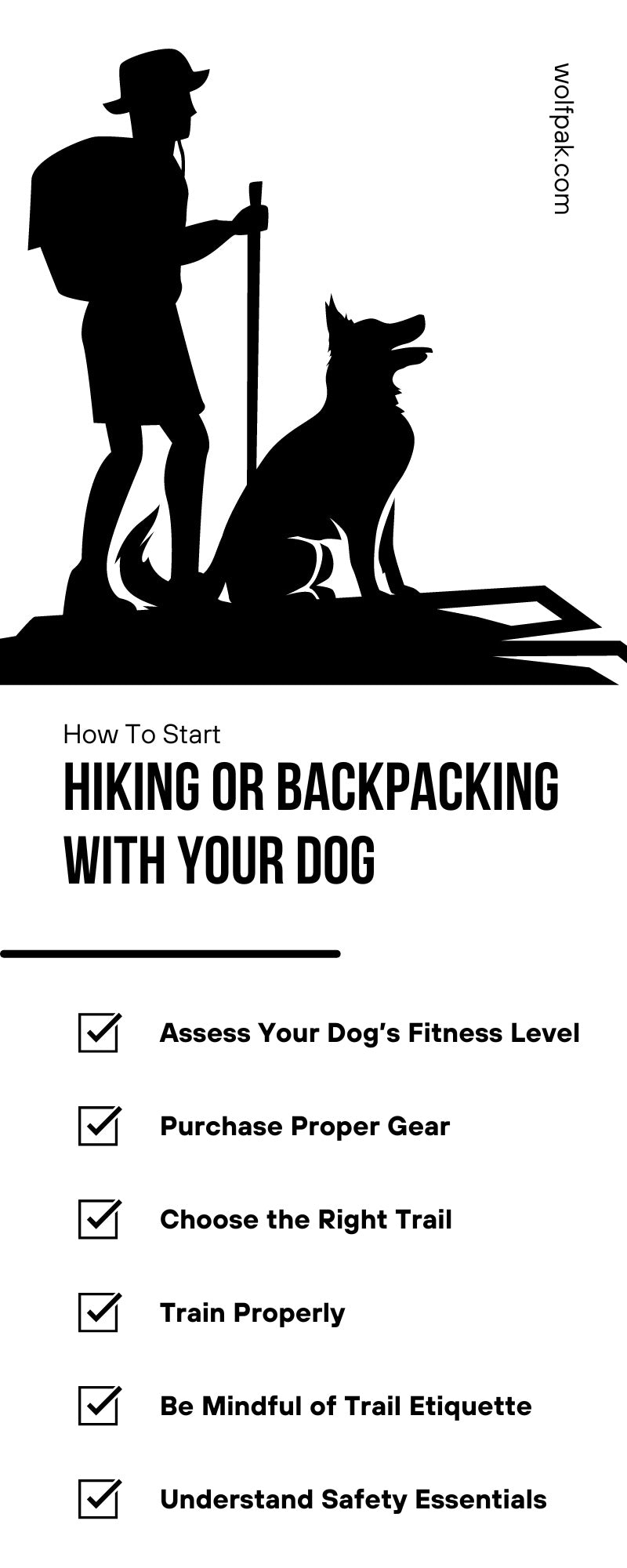
How To Start Hiking or Backpacking With Your Dog
There is something remarkably energizing about the great outdoors—a restorative force that captivates both humans and their loyal companions. Hiking or backpacking is a pursuit that offers health benefits, bonding opportunities, and, perhaps most importantly, unbridled fun if you want to enjoy nature with your pup.
However, the open trail presents its own set of challenges for four-legged hikers that can differ vastly from those that humans face. We’ll explore how to start hiking or backpacking with your dog in this comprehensive guide. These tips will ensure that your next expedition with your furry friend is safe and memorable, from gear essentials to trail etiquette and overall preparedness.
Assess Your Dog’s Fitness
No two dogs are alike when it comes to physical endurance. You must evaluate your dog’s current fitness level before heading out on the trail. Some breeds, such as Border Collies or Siberian Huskies, are natural distance runners and hikers. While others, like Bulldogs or Pugs, may struggle with strenuous activities due to their brachycephalic skull formation.
Start with shorter walks, gradually increasing the distance, and observe how your dog responds. Look for signs of fatigue, excessive panting, or reluctance to continue. Your dog should be able to handle a day hike with relative ease if they are in good shape. Older dogs or those with medical conditions may require more detailed training and an accommodation plan before hitting the trails.
Purchase Proper Gear
Equipping your dog with the right gear ensures their comfort and safety on the trail. A well-fitted harness or hiking pack can help regulate your dog’s movement and provide a means of carrying their essentials. Reflective gear is also a must for early morning or twilight hikes, keeping your pup visible to others and helping to avoid unintended separation.
Bring along collapsible water bowls, a canine first-aid kit, and a comfortable and secure leash. Choose a leash that allows for the right balance of control and freedom, such as a sturdy non-retractable model or a hands-free option. Your dog’s paws are their hiking boots, so don’t forget to protect them from rough terrain with pet-friendly wax or booties.
Choose the Right Trail
Not all trails are created equal, especially when it comes to dog-friendly hiking. Research and choose trails that are suitable for your dog’s experience level and physical condition. Consider the length, elevation gain, and terrain. Rocky or steep paths could pose a challenge to less experienced hikers, while hot pavement or sand can burn paws.
Be mindful of trail rules and whether you can allow your pup to be off-leash in certain areas. Respect the environment and wildlife by staying on designated paths and keeping your dog under control at all times. An ideal trail offers a balance of natural beauty, points of interest, and opportunities for your dog to explore safely.
Train Properly
Just like humans, dogs need training to get ready for a hike. Outdoor commands like “leave it,” “stay close,” or “come” are vital for their safety. Practice these commands in various environments to build consistency and reliability, even in the face of distractions.
Stamina training, which involves gradually increasing the length of your daily walks, will help prepare your dog for longer excursions. Incorporate elevation changes and diverse terrains into your practices to simulate trail conditions. Lastly, acclimate your dog to key gear like their hiking pack or dog boots to ensure they are comfortable using them on the hike.
Be Mindful of Trail Etiquette
Good manners on the trail don’t just apply to humans—dogs should also adhere to trail etiquette. Always clean up after your dog, using biodegradable waste bags and disposing of them properly. Make sure your dog doesn’t disturb local wildlife by keeping them on the trail and under control.
Maintain a visible line of sight and be mindful of other hikers, especially those with their dogs, if your dog is off-leash. Not all dogs are as well-trained or socialized, and some hikers may be wary or allergic. Exercising proper trail etiquette shows respect for the environment and fellow wilderness lovers.
Understand Safety Essentials
Hiking can present a range of hazards, from dehydration and heatstroke to encounters with wildlife. Secure a canine first-aid kit packed with items like disinfectants, bandages, and tick removers. Keep your dog hydrated with regular water breaks and offer snacks to refuel their energy.
Research the local flora and fauna to protect your dog from hazardous plants or venomous creatures. You should always prepare for weather changes and have a plan for shelter if necessary. Additionally, make sure your pet is up to date on vaccinations, and consider preventative measures against ticks and fleas before and after the hike.
Plan Ahead
Thorough planning can make the difference between an enjoyable trek and a day of mishaps. Study the trail map and plan your route before arriving at the trailhead. Don’t forget to pack your dog’s gear, including any important medications or dietary considerations.
It’s best to notify a trusted individual of your hiking plans, including your route and estimated time of return. Take note of emergency contact numbers for the area, like park rangers or local animal control. Remember to charge your cell phone and consider bringing a portable charger to stay connected.
Follow Leave No Trace Principles
Hiking with your dog is a shared adventure, but it also comes with a responsibility to protect the environment. Always follow Leave No Trace principles, packing out all of your dog’s waste and trash. Minimize your impact by avoiding sensitive habitats and water sources where dogs might disrupt natural ecosystems.
Keep your dog on the trail to avoid trampling plant life and be mindful of soil erosion near paths. After your hike, wash your dog’s paws to prevent the spread of invasive species and toxins picked up on the trail. You help preserve the wild spaces you enjoy exploring by taking these measures.
Take Time To Reflect
Every hike with your dog is a unique experience full of moments of connection and discovery. Reflect on your adventures and be open to learning from each one. Share your experiences and tips with other dog owners to foster a community of informed and considerate hikers.
Through sharing, you help others and deepen your understanding and appreciation for the outdoors and the role dogs play in enhancing our connection to nature. Encourage ethical and sustainable hiking practices within your community to ensure the beauty and biodiversity of hiking areas remain for future generations.
Enjoy the Adventure
Knowing how to start hiking or backpacking with your dog can open up a world of exhilarating experiences, forging a bond of shared adventure that will keep tails wagging for years to come. Don’t forget preparation and mindfulness are the keys to a successful outing. You can enjoy the great outdoors with your loyal companion by your side by focusing on exploration and companionship.
At WOLFpak, our selection of tactical dog gear will undoubtedly enhance your hiking or backpacking experience. Our stylish and functional collars, leashes, and harnesses will keep your pup comfortable and safe on the trail. Find the best dog accessories for your next outdoor adventure today!





Leave a comment
This site is protected by reCAPTCHA and the Google Privacy Policy and Terms of Service apply.